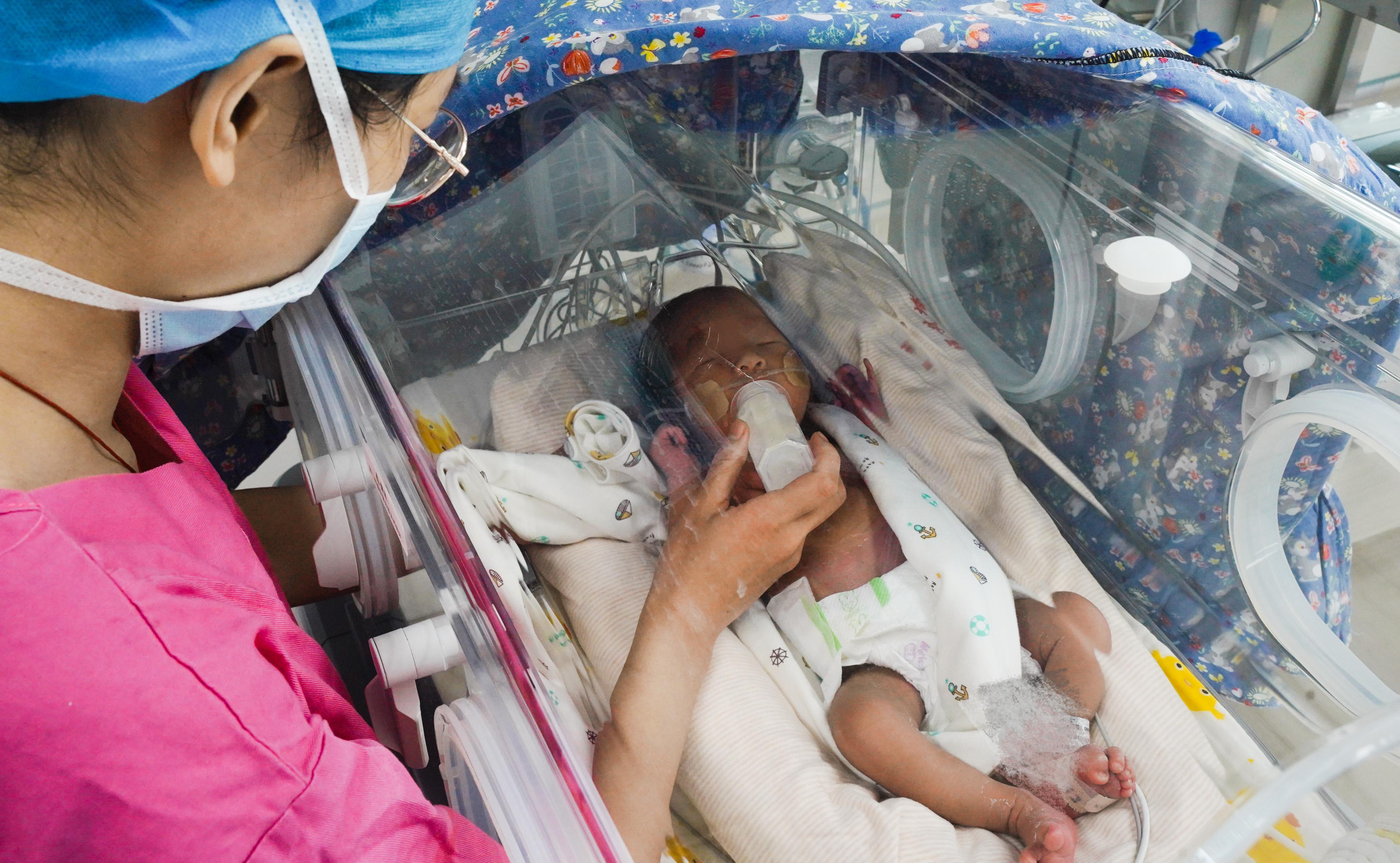
Recently, most provinces have released their latest population data. In 2023, Guangdong ranked first in population with an increase of 1.03 million births, far surpassing other provinces.
 By the end of 2023, Guangdong's permanent population exceeded 127 million, up by 490,000 from the previous year, marking its 18th consecutive year as China's most populous province.
By the end of 2023, Guangdong's permanent population exceeded 127 million, up by 490,000 from the previous year, marking its 18th consecutive year as China's most populous province.
In 2023, Guangdong retained its title as the province with the highest number of births and population, which also represents its popularity.
Strong appeal for living and working
Statistics reveal that Guangdong had 1.03 million births in 2023 with a birth rate of 8.12‰ and 680,000 deaths with a mortality rate of 5.36‰. The natural population growth was 350,000, with a growth rate of 2.75‰. Guangdong has been the only province in China to surpass one million births annually for four consecutive years and has led in national birth rates for six years.
This also indicates that out of the 490,000 increase in Guangdong's permanent population in 2023, 350,000 came from natural growth and 140,000 mainly from migration.
 In 2022, the pandemic caused a temporary reverse migration back to hometowns from Guangdong, but a year later, the province's population growth returned to positive growth. Guangdong's appeal, cohesiveness, and attractiveness continue to draw domestic residents from other regions, ensuring ongoing "population dividends" and "talent dividends."
In 2022, the pandemic caused a temporary reverse migration back to hometowns from Guangdong, but a year later, the province's population growth returned to positive growth. Guangdong's appeal, cohesiveness, and attractiveness continue to draw domestic residents from other regions, ensuring ongoing "population dividends" and "talent dividends."
Willingness and ability to have children
In 2023, at least one in every ten newborns in China was born in Guangdong.
According to the National Bureau of Statistics of China, there were 9.02 million births nationwide in 2023, with Guangdong accounting for 1.03 million, making it the only province to exceed one million births.
 Why are Guangdong residents so enthusiastic about having children?
Why are Guangdong residents so enthusiastic about having children?
Specifically, certain areas within the province maintain positive cultural attitudes towards family and intergenerational continuity, such as Shantou in eastern Guangdong and Zhanjiang in its west, sustaining high birth rates.
Beyond traditional ideas, the continuous influx of residents from other regions and a relatively young demographic structure support the birth rates in cities like Guangzhou, Dongguan, and others in the Pearl River Delta.
In 2023, cities such as Guangzhou, Dongguan, Shenzhen, Foshan, Zhongshan, Huizhou, and Jiangmen in the Pearl River Delta all reported higher permanent populations than registered populations. An increasing number of residents from other regions have settled in the Delta to work and start a family, thus contributing to the increase in the birth rate.
 At present, Guangdong has implemented several measures. These include creating over 330,000 new public kindergarten enrollment slots and increasing housing provident fund loan limits for families with multiple children, so as to further address challenges in raising children and promote high-quality development of the population.
At present, Guangdong has implemented several measures. These include creating over 330,000 new public kindergarten enrollment slots and increasing housing provident fund loan limits for families with multiple children, so as to further address challenges in raising children and promote high-quality development of the population.
Source :Yangcheng Evening News
广东连续18年成为中国人口第一大省
近日,大部分省市公布了最新人口情况。2023 年,广东省以103万的出生人口增量位列中国第一,遥遥领先其他省份。
与此同时,2023年末,广东省常住人口突破1.27亿,比2022年末增加49万人,连续18年成为中国人口第一大省。
2023年,广东再度拿下“人口大省”和“生育大省”双料冠军,“人气”旺出了新高度。
宜居宜业“强引力”
数据显示,2023年广东全年出生人口达103万人,出生率8.12‰,死亡人口68万人,死亡率5.36‰,自然增长35万人,自然增长率2.75‰。广东不仅连续四年成为全国唯一一个出生人口超百万的省份,更是连续6年成为全国生育第一大省。
这也意味着,2023年,广东常住人口增长的49万人中,有35万人来自自然增长,另有14万人主要来自迁移增长。
2022年,受疫情影响,广东的省外流动人口出现了回流返乡的阶段性现象,但时隔一年,广东常住人口重回了正增长轨道。可见宜居宜业的广东,对于流动人口的吸引力、凝聚力和黏合力依然强劲,仍将持续产生更多的“人口红利”和“人才红利”。
“能生”更“敢生”
2023年,全国每10个新生儿里,至少有1个出生在广东。
根据国家统计局发布的信息,2023年全国出生人口902万人,其中广东出生人口达到103万,成为了全国唯一一个出生人口超过百万的城市。
广东为什么这么热衷“生娃”?
具体来看,广东省内一些地区有着较为浓郁的生育文化,这种家庭观念强、重视代际传承的婚育文化传统维持了当地的高出生率,如其中,以汕头为代表的粤东地区和以湛江为代表的粤西地区,一直都是广东生育率较高的地区。
除传统观念影响之外,持续的外来人口流入以及较为年轻的年龄结构,则支撑起了广州、东莞等珠三角城市的出生率。
2023年,广州、东莞、深圳、佛山、中山、惠州、江门等珠三角城市的常住人口数均高于户籍人口数,越来越多的外地人进入珠三角地区,成为了“新老广”,并在当地就业、安家、生子,带来了更多的新生儿。
当前,广东已经出台了多项措施完善和落实积极生育支持,包括新增公办幼儿园学位33万个以上、提高多子女家庭住房公积金贷款额度等举措,以进一步解决“养”“育”问题,促进人口高质量发展。
文|记者 陈泽云
翻译|赵凡
-
Y Talk 67|The world needs more “Marco Polo“ 世界需要更多马可·波罗
2024-05-07 21:55:04 -
Y Talk 66|Why did Fatah and Hamas choose Beijing for their talks?法塔赫和哈马斯为何选在北京进行磋商?
2024-05-07 16:55:43 -
Despite rainy weather, Guangdong attractions remain popular during May Day holiday
2024-05-06 23:23:38 -
'Chinese Warrior Dance' takes to the sky for the first time
2024-05-06 23:23:38






